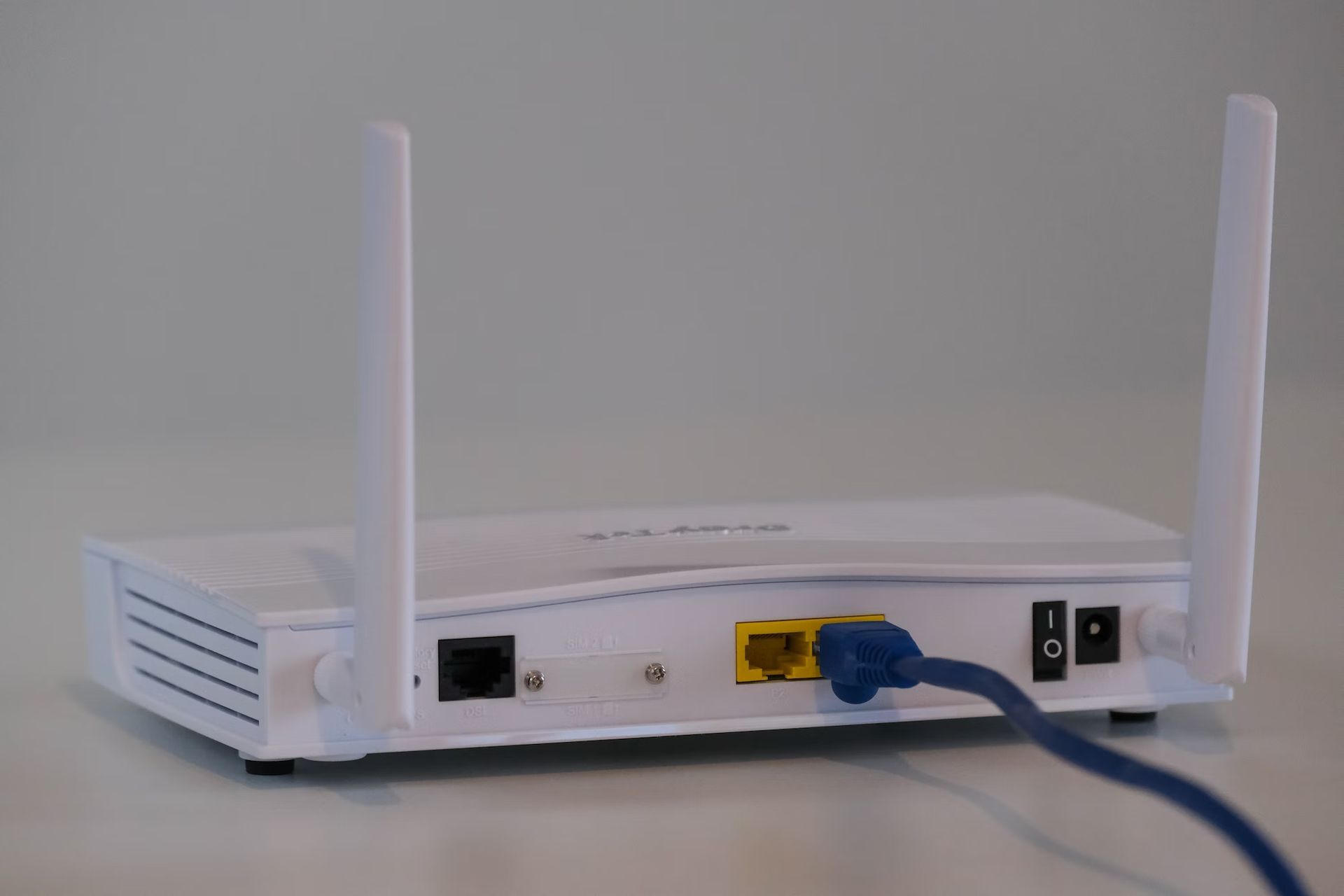Network as a Service (NaaS) is a flexible model of enterprise network infrastructure that allows businesses to adapt to new technologies, meet ever-evolving business objectives, and enhance user experiences and network performance.
The pandemic has boosted the adoption of Everything as a Service (XaaS), according to a Deloitte survey conducted in February 2021. (XaaS). XaaS is an example of how businesses all over the world are utilizing the “as a service” concept for practically anything. According to 88% of study participants from Deloitte, XaaS will be essential as companies recover from the epidemic.
There are many XaaS sub-components, but SaaS (Software as a Service), which has largely taken the lead, is one of the most influential ones. Network as a Service (NaaS) and Connectivity as a Service (CaaS) are two important concepts that are helping the networking industry.
“By the end of 2024, on-premises NaaS will be adopted by 15% of all enterprises, up from less than 1% in 2021.”
Gartner
What is Network as a Service (NaaS)?
Network as a Service covers network infrastructure hardware, software, services, management, and licensing components in a subscription-based or flexible consumption model. Network infrastructure provisioning, deployment, network management, maintenance, and lifecycle management can all be outsourced by businesses using NaaS.
Why should you implement NaaS in your organization?
Network as a Service offers your business acceleration by
- Employing more advanced network technology equipment lifecycles by recycling and/or upcycling, allowing for quicker deployment of new features and capabilities.
- Meeting the requirements of the evolving ecosystem of hardware and software technologies in use today.

Network as a Service offers the adaptability required to keep up with the business dynamics’ quick changes by
- Utilizing a subscription-based model to reduce the need for substantial capital investments necessary for major deployments.
- Reducing operational complexity using a program that is adapted to your needs.
The following are some other ways that Network as a Service enables you to take advantage of vendor expertise to enhance network performance and deliver the best user experience:
- Consistent performance and security monitoring reduce the management burden for enterprises with limited resources.
- Proactive management powers and access to highly qualified networking specialists who are personally designated and dedicated to your account.
- Proven network configurations and designs created in collaboration with clients and industry experts.
Why should an enterprise adopt NaaS?
Using flexible operating expense (OpEx) subscriptions and Network as a Service (NaaS) enables enterprises to use network infrastructure. This includes hardware, software, management tools, licensing, and lifecycle services.
According to the conventional network model, physical networks with switches, routers, and licenses require capital expenditures (CapEx). The DIY IT strategy necessitates planning and deployment time as well as technical know-how to install and configure equipment and guarantee security access restrictions are in place. These are some elements of this model:
- Due to the quick changes in technology and security risks, dynamic updating and patch monitoring are necessary.
- A technician must set up equipment at various locations as part of the manual procedure of provisioning a new service.
- Service provisioning and problem-solving have traditionally been drawn-out procedures.
IT teams have struggled to keep up as networks have become more sophisticated due to an increase in mobile users connecting from all over the world and the expansion of cloud computing.
What are the benefits of Network as a Service?
We will discuss the benefits of Network as a Service to a further degree. Network as a Service has numerous advantages, from budget management to security and sustainability to agility.
Flexible budget
By providing an alternative to up-front capital investments, Network as a Service helps enterprises get over common financial challenges. One of the main benefits of NaaS is the ability to pay as you expand. Organizations can respond to today’s fast-changing, dynamic business environment thanks to financial flexibility.
Security
Advanced security of NaaS helps reduce operational risk and keep the network in excellent condition through faster deployment of new features and functions. In order to introduce new services and capabilities more quickly, Network as a Service can satisfy line-of-business requirements. Extensive services guarantee top performance and shield businesses from security flaws brought on by outdated hardware or setups.

Agile responses
With the help of proactive advising and management tools, Network as a Service implementations reduce potential risks. AIOps (AI for IT Operations) generated insights, or highly trained networking professionals are frequently included in proactive management capabilities to ensure the business is maximizing its deployment with the most recent product features, functionalities, or settings. This proactive management strategy aims to improve operations and performance while resolving any problems before they result in disruption.
Management
NaaS cloud management capabilities can offer integrated administration of network domains (data centers, enterprise campuses, and WAN) to help businesses easily scale their networks. Additional managed services can be implemented to manage every aspect of network activity.
Sustainability
Effective NaaS programs help address concerns about costs and security related to outdated hardware resources. Equipment recycling and safe disposal are necessary yet expensive. A Network as a Service offering’s primary characteristics of sustainable reuse and retirement help businesses achieve their sustainability objectives more easily.
How does Network as a Service work?
Enterprise network infrastructure has typically been consumed by organizations through a one-time capital investment in hardware, software, licenses, and services that may or may not be packaged together. With all hardware, software, licenses, and services delivered in a flexible consumption or subscription-based offering, NaaS enables businesses to consume and, optionally, outsource the full lifecycle of their enterprise network deployment. In many cases, this can be done while still maintaining operational expenses.

Additionally, Network as a Service enables businesses to contract out network planning, deployment, daily operational management, software upgrades, monitoring, troubleshooting, decommissioning, and end-of-life support. Through this procedure, businesses can acquire the newest technology while reducing the workload on their IT team.
Understanding the difference between NaaS and SASE
The Secure Access Service Edge (SASE) specification outlines the architectural requirements for SD-WAN and cloud security to link users to applications and data from the workplace, the home, and when on the go. Wherever they work, it is meant to safeguard users from vulnerabilities and help establish the proper amount of access to those data and apps.
While Network as a Service is an all-inclusive service bundle for operating networking without owning physical equipment, SASE is an architecture.
The 2022 Global Networking Trends Report of Cisco outlines that “hybrid work demands a cohesive SASE strategy to deliver a consistent and exceptional user experience from anywhere.”
What’s the difference between NaaS, IaaS, and SaaS?
Any software application that is supplied over the cloud as a subscription-based service is referred to as “software as a service” (SaaS). SaaS includes a wide range of web programs that people use on a daily basis.
IaaS, or Infrastructure as a Service, is the use of any IT hardware and software infrastructure components, such as computational power or storage, over the cloud in a subscription-based or flexible consumption model. Similar to SaaS, it is a broad term that can include all facets of IT infrastructure, including computation, storage, and networks.
In contrast to SaaS and IaaS, Network as a Service is significantly more specialized and exclusively related to networking functionality. It exclusively refers to networking gear, software, and services that are “cloud-like”, which implies subscription-based or consumption-based payment, in contrast to SaaS and IaaS. The phrase is occasionally expanded to cover a network environment’s daily management and operations by a third party, such as the vendor or vendor partner.
Network as a Service vs. Connectivity as a Service (NaaS vs. CaaS)
A Network as a Service approach involves fully virtualizing delivery and offloading network maintenance to a supplier. On the other hand, connectivity as a service still uses both the cloud and conventional hardware when appropriate (or when a customer still has the equipment they want to use).

Connectivity as a Service offers a comprehensive inventory of network management tools and a business model that considers current infrastructure through network upgrades and buy-back programs. Whereas, Network as a Service offers network administration as a service, whereas Connectivity as a Service offers a comprehensive strategy for network management that includes various commercial and technological support services and resources.
Does NaaS help sustainability efforts?
Many progressive organizations place a high priority on sustainability. Given shorter lifetime updates and more technological debris, environmental issues keep growing. Management of IT Asset Disposition (ITAD) can be very expensive.
Due to concerns that private or company information may be compromised when hardware components are recycled, many businesses handle outdated equipment in warehouses. Effective NaaS programs aid in easing these concerns about cost and security. Recycling and proper disposal of equipment are both important yet expensive. Businesses can more easily accomplish their sustainability goals thanks to the main characteristics of a Network as a Service offering: sustainable reuse and retirement.
Network as a Service providers
Below we are going to review some of the best Network as a Service providers:
Cisco Plus NaaS
Since the industry has dominated on-premise networking for decades, Cisco is dedicated to being the market leader in managed NaaS solutions. A large variety of cross-architecture choices are included under the name Cisco Plus, which is provided as a service.
To increase productivity and cut expenses, it uses automation and analytics powered by AI. Cisco Plus Hybrid Cloud offers a consumption pattern for data centers’ network, computing, and storage systems.
These are a group of technologies with standardized subscriptions, but this is quickly changing. Soon, a unified suite will be made accessible. This platform, which Cisco has recently launched, is still in its infancy, but its rivals are keeping an eye on it.
According to Cisco, Cisco Plus will provide XaaS solutions for its computing, networking, and storage equipment to help its customers improve their IT operations and free up resources to engage in important business innovation.
Perimeter 81
Perimeter 81’s Network as a Solution (NaaS) service combines network management and security with regional and cloud-based services, including Azure, Salesforce, AWS, and Google Cloud.
In this cloud-native NaaS, authentication, zero trust, Wi-Fi safety, DNS filtering, and breach prevention are all included in the service. By relocating network resources closer to the point of use, NaaS decreases network delay.
Perimeter 81 offers cybersecurity that is easier to use, better, and more adaptable to satisfy both present and future demands.
With the help of Perimeter 81, a single Zero Trust Network as a Service will be able to take the role of conventional network security solutions. Additionally, Perimeter 81 minimizes network delay.

Aryaka SmartServices
Incorporating SD-WAN & SASE architectures, Aryaka SmartService offers specialized security and network solutions for local and international deployments. Through their cloud-first network architecture, enterprises can access network functions with the help of Aryaka’s SD-WAN offering.
A scalable OpEx-based network consumption paradigm is the foundation of this service. It takes little time to train.
Aryaka’s mission and guiding principles are to put the needs of its customers first and strive to go above and beyond. Other names for Aryaka SmartServices include Aryaka SmartConnect, Aryaka Managed SD-WAN, and Aryaka Managed WAN Services.
Megaport MCR
Digital routing platform Megaport MCR offers Layer 3 on-demand personal connectivity. It is set up in important routing sectors of data centers all around the world, ensuring data transmission.
Without the need for physical infrastructure, cloud-to-cloud communication or private peering between cloud providers can be used. MCR instances are preconfigured at data centers located in important global routing zones.
Its goal is to make connecting easier in a world where clouds are used. The MCR systems support a wide range of use cases, including hybrid clouds, which let users connect an MCR and a Megaport to a private IT infrastructure and a public cloud environment.
Conclusion
Numerous IT organizations are having trouble keeping up with the escalating pace of business while managing network complexity, responding to disruptions, protecting users and data, and responding to abnormalities. Many people are looking towards new networking paradigms, such as NaaS, to address these issues. NaaS offers on-demand or subscription-based access to the most recent networking technology continuously.
It transfers responsibility for ongoing network management to a third-party supplier. And doing so, NaaS makes it possible for IT teams to concentrate on tasks that bring value and lead to increased adaptability, resilience, and creativity. There are doubts and concerns with NaaS, as there are with any transformational approach. However, it is not an all-or-nothing situation. IT teams can collaborate with trustworthy partners to test NaaS on a modest scale, weigh the benefits and risks, and determine whether it fits with their larger business and technology strategy.
If you are eager to learn more about the adoption of Everything as a Service (XaaS) models, you can check out our other articles:






